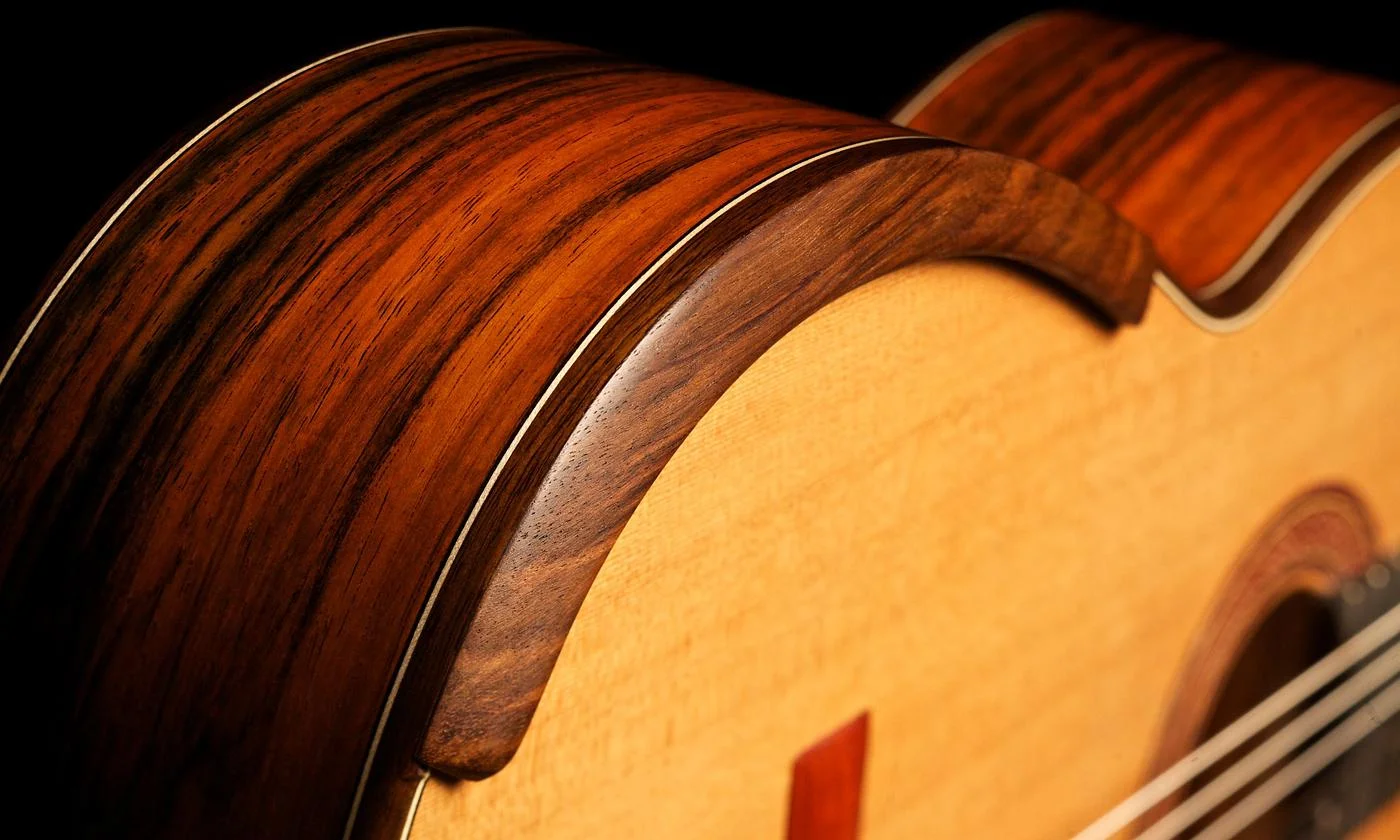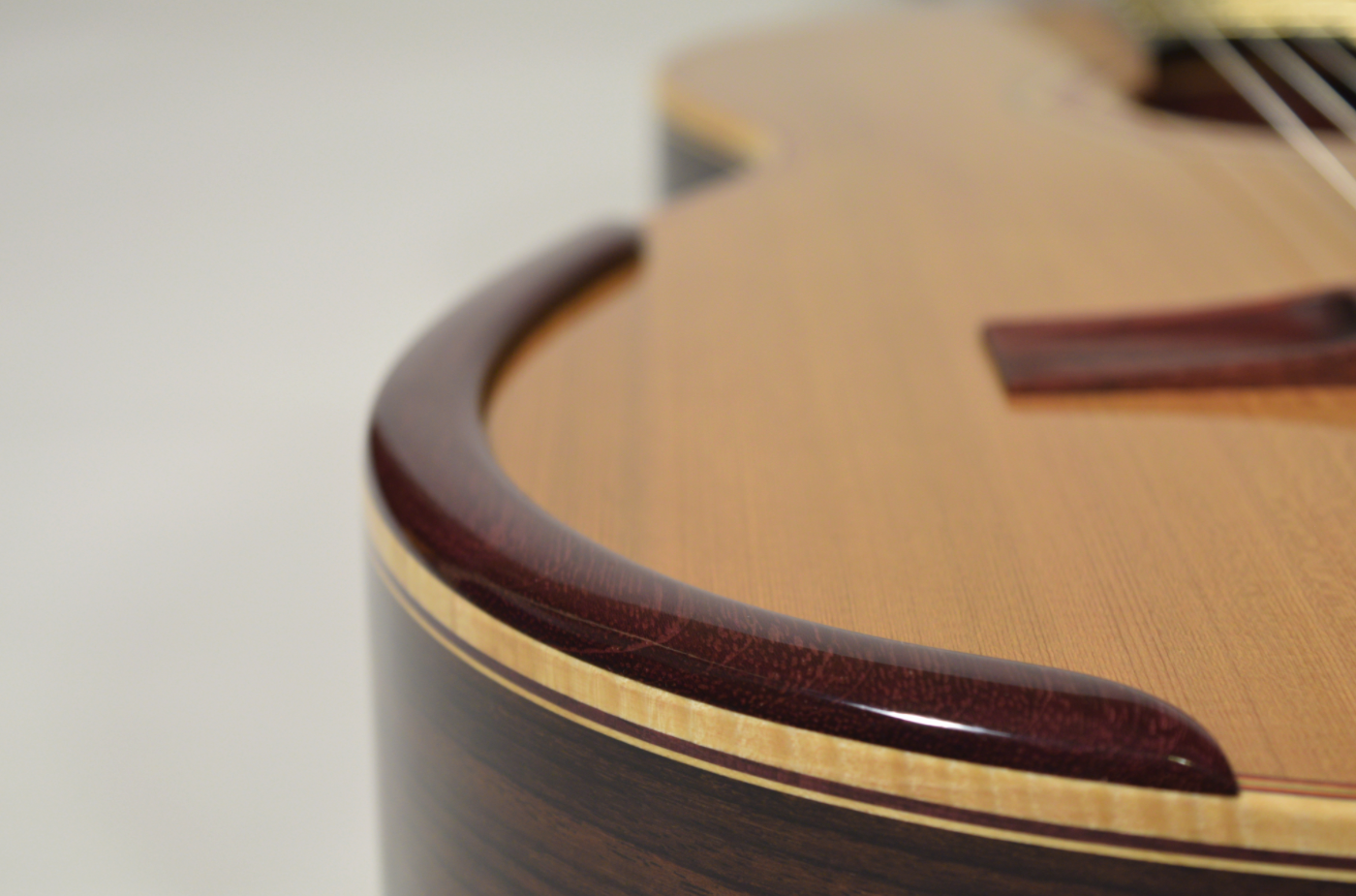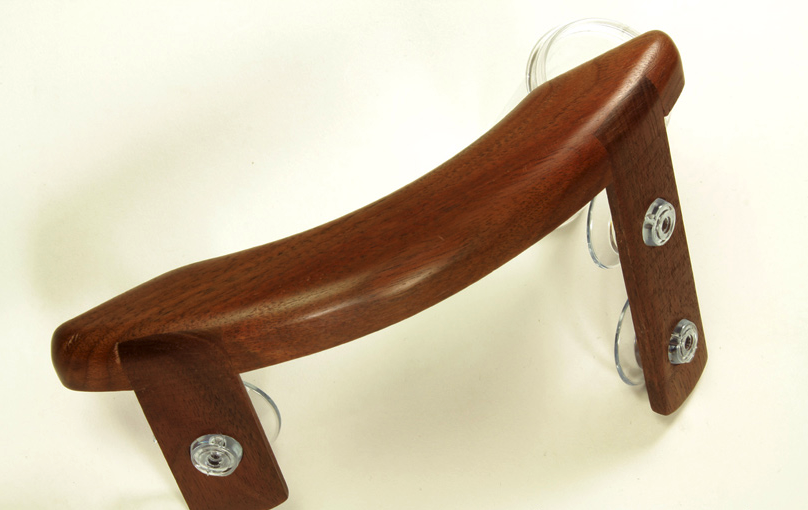Modern Classical Guitar Design Part 4: Armrest
Introduction
Welcome to part 4 in my series of articles about modern classical guitar design. In this article I will be discussing an innovation first seen on guitars made by the famous Australian classical guitar luthier - Greg Smallman. Hopefully by the end of the article you will have a better understanding of how they are made, why they are a good innovation, and where to find guitars that have them incorporated into their design.
What is a 'Classical Guitar Armrest'?
An armrest is a relatively simple design feature that serves three primary purposes:
- It allows the soundboard to vibrate freely by reducing the damping effect of the forearm as it contacts the side and soundboard when playing
- It protects the finish of the guitar from blemishing at the point of contact with the forearm
- It can be more comfortable as it replaces the somewhat sharp edge where the soundboard meets the side with a more rounded contour
My personal experience
To be perfectly honest I can say it is more comfortable and it definitely protects the guitar from blemishing on the soundboard & side. However, I couldn't say if it really effects the volume or quality of sound produced by the guitar itself. I think the only true test would be for a luthier to make a guitar and measure it's output with and without an armrest.
Another interesting point is the fact that an armrest will 'push' your arm out and away from the soundboard a little more than you may be accustomed too. That is because the armrest sits proud from the soundboard.
It seems that not everyone is convinced on the effectiveness or necessity of armrests on classical guitars. Some players note that no significant benefit to sound is perceptible at all. On that count I would have to agree however as I stated previously it is definitely more comfortable and it does protect the guitar but you could just as easily use a guitar cloth as many guitarists currently do.
Different Types of Armrests
It seems that armrests come in all shapes and sizes but generally speaking they are all quite similar in design. They are also made from a variety of woods and some are also synthetic. Interestingly enough it is also possible to retrofit an armrest onto your existing guitar.
Below is a beautifully handcrafted Rosewood classical guitar armrest from Ortega.
My Verdict
Personally I would recommend a bevelled edge or bevelled armrest instead of an armrest. A bevelled armrest does not sit proud and it provides maximum comfort as the bevel actually becomes part of the guitar itself rather than feeling like it was a tacked on afterthought.
I'll be covering bevelled armrests in my next article on modern classical guitar design & innovations.
Check out my other articles in the
'Modern Classical Guitar Design Series':
Part 8: Fanned Frets
Part 7: Arched back
Part 6: Double Tops
Part 5: Lattice Bracing
Part 3: Soundports
Part 2: Indented Cutaway
Part 1: Elevated Fingerboard
Let your fingers fly!




